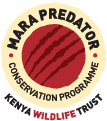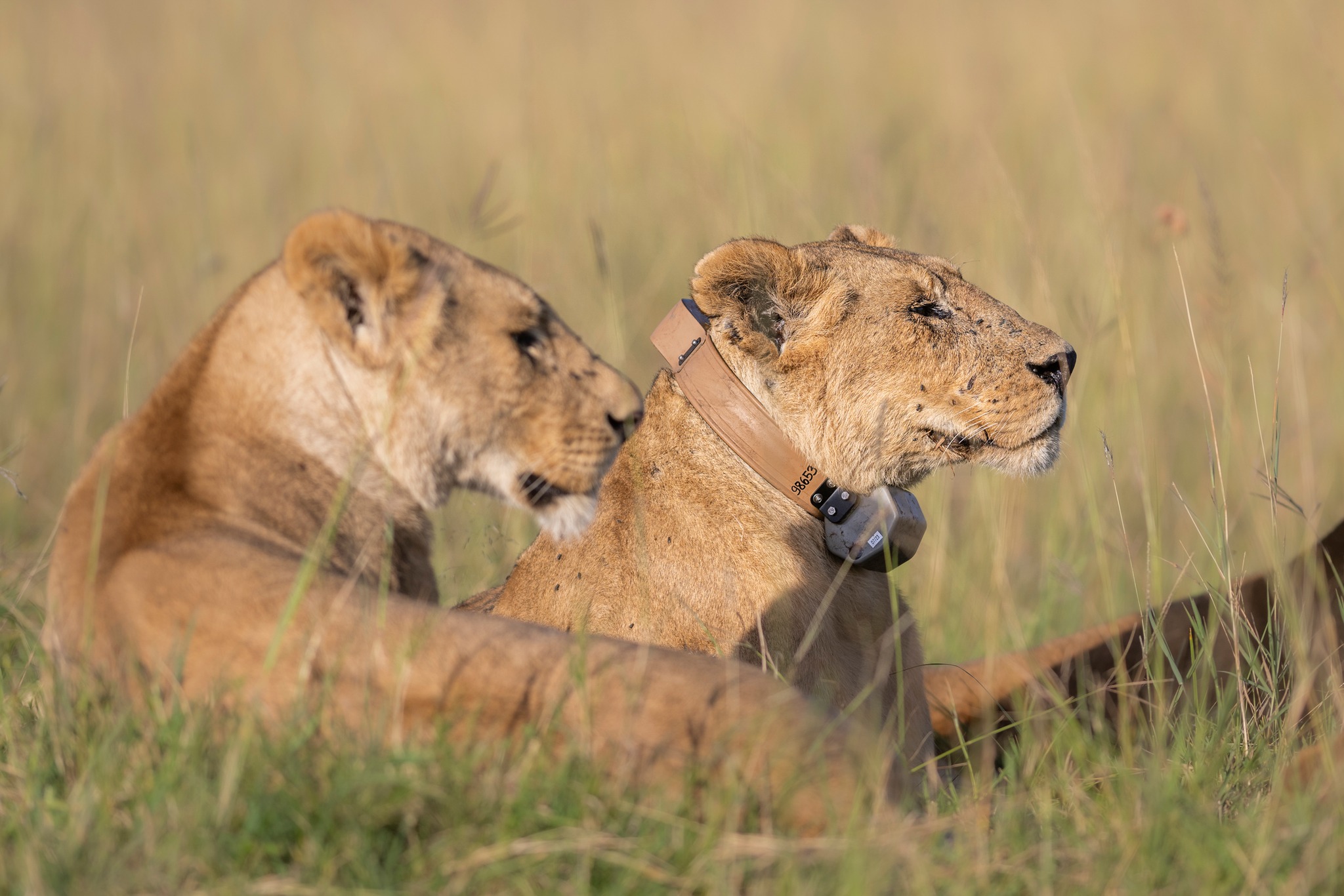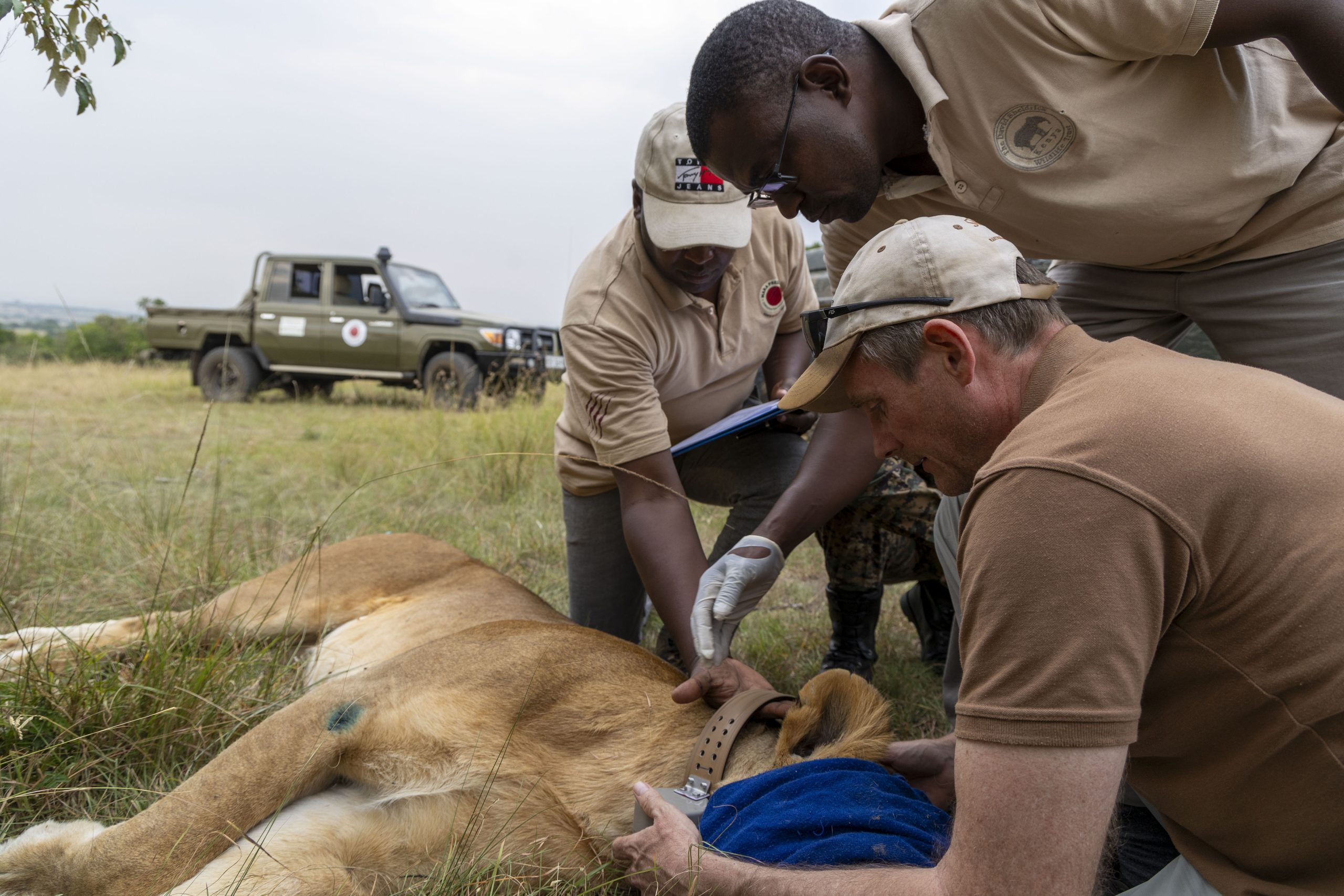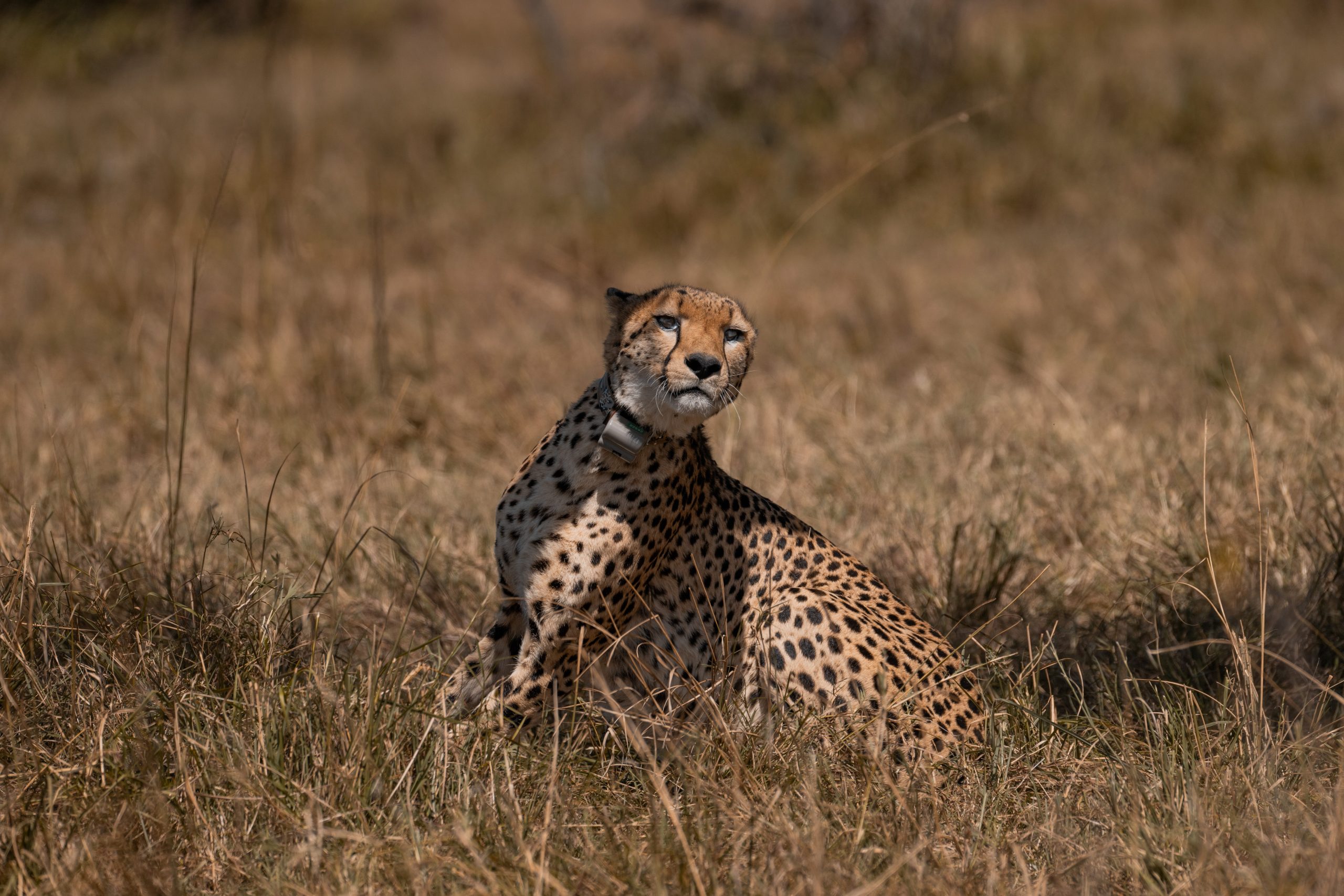Collars for Conservation
What are wildlife collars and what do they do?
Wildlife collars are used to collect animal location data (GPS) at set time intervals. This data is then received by the Mara Predator Conservation Programme team through satellite communication, which allows us to continuously and intensively monitor the collared animals, helping us to earn more about their space use, activity patterns, and threats they face, in order for us to devise solutions and recommendations to help protect them.
How collars help big cat conservation
Predators face a kaleidoscope of threats around the world and in the Mara, and collars help us to better understand, identify, and respond to these threats. For example, cheetah and lion collars enable us to:
- Identify important areas and habitats that are used by cheetahs and lions, including wildlife corridors
- Understand how human-led changes (e.g. erection of fences) affect cheetah and lion movement and behavior
- Keep track of cubs being born
- Determine how much time cheetahs and lions spend outside protected areas and how prone they are to human-wildlife conflict
- Understand issues related to disease transmission e.g. mange in cheetah
- Be immediately alerted when a cheetah or lion has died. The collar sends a mortality signal if the animal has been stationary for a significant period of time. This allows us to investigate any natural and human-caused death in a timely manner, and be more likely to accurately determine the specific cause of death.
Sub-adult male lion monitoring
Dispersing sub-adult males (those who have left their ‘home’ pride but have not yet found or established a pride of their own) are frequently nomadic for years, wandering over vast distances and often coming into contact with humans and livestock. They are the main demographic of lion associated with human-lion conflict, so we use lion collars to help alert us to potential problems and reduce the impact of any conflict.
Sub-adult males are also largely responsible for connecting sub-populations of lions and maintaining genetic diversity within a population. In an ever-evolving ecosystem like the Greater Mara, lion collars will help to identify priority landscapes for protection.
Considering that two of the major threats facing lions are human-lion conflict and habitat fragmentation, we focus on dispersing male lions when it comes to collaring, as they provide the most relevant and useful information for conservation planning. Without collars, we would never understand exactly what is happening to this vital demographic of lions in the Mara.
Adult female lion monitoring
All of Mara’s protected areas have periphery prides that venture beyond protected area boundaries and onto the community land, where lions are often killed in retaliation for livestock predation. This is also true for periphery prides from the National Reserve. The high fragmentation rate of the surrounding protected area habitats amplifies the need to understand what factors influence space use decisions by lions. By documenting the movements of prides outside the Reserve and the conservancies, we are able to demonstrate the important pride refuge areas.
This identification of high-use areas on unprotected land is important in highlighting those areas where conservation efforts are especially needed, as well as where community awareness should be focused.
The tourist experience
We find that discussions with tourists about collars are some of the most interesting we have! We fully appreciate that some people do not like seeing a collar on an animal until they hear why collars are so important for conservation. In our experience, once the value of a collar is explained to a tourist or group, it can actually enhance their experience as they witness conservation happening before their own eyes, in the middle of their safari. We partner closely with safari guides and camps around the Mara to ensure that people understand why we collar predators and how it helps with their conservation.
Collaring ethics
Our mission is to conserve predators and so we take their welfare extremely seriously. The following will ensure that no harm will be done to the big cats we collar:
- We partner with Kenya Wildlife Service to ensure that all immobilizations that are needed to deploy collars are done by a qualified veterinarian.
- Cheetah collars will only be 400 grams which is about 1% of a cheetah’s body weight. This is actually considerably less than the recommended weight! At this level, a collar will not affect the cheetah’s ability to hunt or run at great speed.
- Lion collars will only be 1,000 grams which is about 1% of a lion’s body weight. At this level, a collar will not affect the lion’s ability to hunt or reproduce successfully.
- Our collars are made by Vectronics, a German company with a great deal of experience in designing and manufacturing wildlife collars.
- All collars are fitted with a timer and radio-controlled drop-off mechanisms, so the collar will drop off at a specific date of our choosing, or we can trigger the drop off via a handheld transmitter.
How you can help
If you would like to support Collars for Conservation, you can help us buy our next round of big cat collars. You can then receive information about the animals you have helped to collar, knowing that your contribution is actively helping our conservation on the ground!
All donations towards collars can be made to Kenya Wildlife Trust




